I am trying to solve SDE for Brownian particle and Langevein Dynamics. At first I tried to simulate 2D brownian motion with normal random number generator, The code is:
import numpy as np
import matplotlib.pyplot as plt
%matplotlib inline
dt = .001 # Time step.
T = 2. # Total time.
n = int(T / dt) # Number of time steps.
t = np.linspace(0., T, n) # Vector of times.
sqrtdt = np.sqrt(dt)
y = np.zeros(n)
x = np.zeros(n)
for i in range(n-1):
x[i + 1] = x[i] + np.random.normal(0.0,1.0)
y[i + 1] = y[i] + np.random.normal(0.0,1.0)
fig, axs = plt.subplots(1, 1, figsize=(12, 12))
plt.plot(y, x, label ='Position')
plt.title("Simulation of Brownian motion")
plt.show()

Now when I am trying to simulate the same process with the help of forward Euler Method, the governing equation is
mdv/dt=η
using the following code,
import numpy as np
import matplotlib.pyplot as plt
%matplotlib inline
dt = .001 # Time step.
T = 2. # Total time.
n = int(T / dt) # Number of time steps.
t = np.linspace(0., T, n) # Vector of times.
sqrtdt = np.sqrt(dt)
v_x = np.zeros(n)
v_y = np.zeros(n)
y = np.zeros(n)
x = np.zeros(n)
for i in range(n-1):
v_x[i + 1] = v_x[i] + sqrtdt * np.random.normal(0.0,1.0)
v_y[i + 1] = v_y[i] + sqrtdt * np.random.normal(0.0,1.0)
x[i+1] = x[i] + (v_x[i]*dt)
y[i+1] = y[i] + (v_y[i]*dt)
fig, axs = plt.subplots(1, 1, figsize=(12, 8))
plt.plot(y, x, label ='Position')
plt.title("Simulation of Brownian motion")
plt.show()
The result is this,

I want to figure out my mistake. Please help